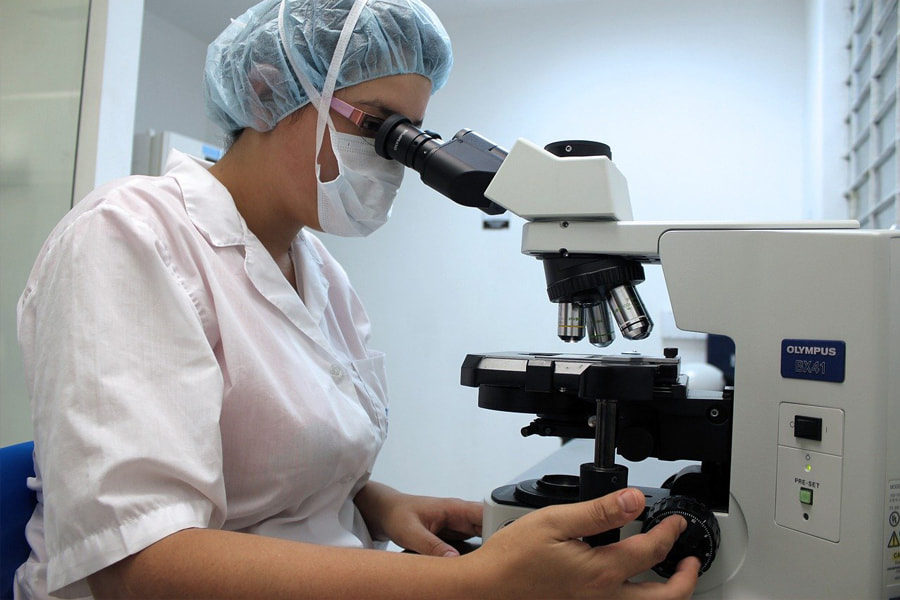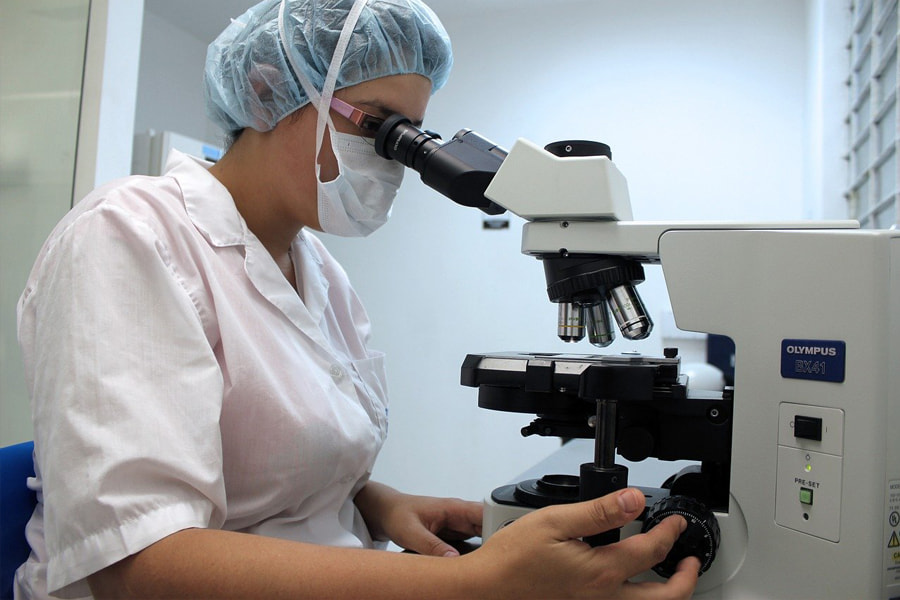
A microscope, as you may know, is a piece of useful equipment that allows you to magnify small objects. The most popular form of the microscope is an optical microscope, which uses lenses to make images from visible light. Electron microscopes make images by using electron beams. Acoustic microscopes make images using high-frequency sound waves. Tunneling microscopes use electrons’ capacity to “tunnel” through the surface of objects at extremely small distances to make images. Of course, you would like it a big-time to get to know about the history of microscopes. And this article is specifically for that. You will get to know all about the history of microscopes through this article.
The Very First Microscope in the world
With regard to the history of microscopes, we can never forget to talk about the very first microscope in the world. Although the oldest recorded usage of basic microscopes (magnifying glasses) goes back to the widespread use of lenses in eyeglasses in the 13th century, there are Greek reports of the optical characteristics of water-filled spheres (5th century BC), followed by several centuries of publications on optics.
The compound microscope, which comprises various types and sizes of lenses at opposing ends of a tube, is said to have been invented in approximately 1590 by the Dutch spectacle manufacturers Zacharias Jansen and Hans Jansen. They discovered that tiny things could be magnified by using various types and sizes of lenses in opposite ends of tubes.
During the 13th century, grinding glass for eyeglasses and magnifying glasses was prevalent. Although Dutch lens makers created magnifying devices in the late 16th century, it was not until 1609 that Galileo Galilei completed the first microscope. Although there have been attempts to create microscopes, this is the creation that we consider to be the first proper microscope.
Some of the first microscopes were also built by a Dutchman named Antoine Van Leeuwenhoek, according to research into the history of the microscope. His first microscope was a little glass ball encased in a metal frame. Antoine Van Leeuwenhoek made a name for himself by utilizing his device to investigate single-celled microorganisms in freshwater, which he dubbed “animalcules.”
The Invisible World: Early Modern Philosophy and the Invention of the Microscope (Studies in Intellectual History and the History of Philosophy, 2) Paperback – December 1, 1997
Catherine Wilson is the author of this book. According to Catherine Wilson, the microscope opened up a new universe of observation in the seventeenth century. And it significantly changed the thinking of scientists and philosophers alike. With the aid of optical instruments, the interior of nature, which had previously been closed to both sympathetic intuition and direct perception, was now accessible. The microscope sparked a revived interest in atomism and mechanism, as well as a new understanding of science as an objective, procedure-driven style of inquiry. This book gives both a gripping technological history and a vivid critique of the new knowledge that helped establish philosophy, focusing on the initial attempts into the microscopical investigation, from 1620 to 1720.
Development of the concept
Robert Hooke wrote the famous Micrographia in the late 1600s, which detailed Hooke’s different microscope research, complete with beautiful pictures. This paper had a great influence on the advancement of the microscope.
Antoine Van Leeuwenhoek refined the microscope, based on the work of Hooke, the Jansen brothers, and Galileo, to observe microscopic objects that no one had ever seen before. Antoine Van Leeuwenhoek is known as the “Father of Microscopy” for his numerous contributions to the field of microscopy via his study and studies on bacteria, yeast, blood cells, and microscopic creatures floating about in a drop of water.
The tradesman began making his own lenses, which could magnify up to 300 times their original size, a significant improvement over most earlier systems, which could only magnify up to 20-30 times their original size. His interest was piqued as well. When it came to the plaque on his teeth, van Leeuwenhoek observed that the bacteria in his spittle was “very pretty a-moving,” with one type gliding “like a pike through the water.”
So there was a seventy-year gap between the development of the microscope and the publication of “any systematic work of considerable and permanent scientific importance.” Ball credits this to the early microscopes’ basic nature, which made them extremely difficult to use. All these are factors that we need to consider when talking about the history of microscopes.
The Ultimate Guide to the Microscope I: Microscope history, parts, and types. [Print Replica] Kindle Edition
This book covers “what is a microscope,” “how a microscope works,” “microscope history,” “microscope types,” and “microscope applications.” Furthermore, authentic photographs of each microscope component will assist you in becoming familiar with its function and how to utilize it effectively. We think that this would be of great help in order to understand the history of microscopes. That is why we are suggesting this to you.
Birth of the term Microscope
In terms of the history of microscopes, we need to look into how the term came into use. The microscope, a phrase derived from the ancient Greek words mikros meaning “tiny” and skopein meaning “to look” or “see,” was developed about 1625 by Giovanni Faber (1574-1629). It means a device used to view things that are too small to be seen with the human eye. Before the next significant advancement, the microscope had been in use for nearly a century. Chester Moore Hall invented the achromatic lens in eyeglass in 1729, which increased the microscope’s visual clarity.
80-2000X Optical Microscope, Metal Body, 2 WF Oculars, Dual-illuminators System, US Plug, Full Accessories for Kids Students Beginners
When using this microscope, you need to choose a low magnification combination (80X) when you want to examine the complete specimen clearly, and a higher magnification combination (max 2000X). You can also compare images of the same sample at different magnifications. Use wide-field eyepieces made of high-quality all-optical instruments to view brighter and clearer. With achromatic goals, you may see the most realistic microbiological world.
Development since the 18th century
Many alterations, advances, and improvements happened to both the housing design and the quality of the microscope over the 18th and 19th centuries. In this part of the article, we can take a look into how it all evolved gradually.
1830
Joseph Jackson Lister observed that combining weak lenses at different distances resulted in clearer magnification of things. The understanding of this concept was a great milestone in going ahead in this industry.
1878
Ernest Abbe established a mathematical hypothesis connecting resolution to light wavelength. This was another great step to revolutionize microscopes.
1903
Richard Zsigmondy designed an ultramicroscope that enables the examination of samples below the wavelength of light. This initiative made the industry step one step further.
1932
Frits Xernikie invented the phase-contrast microscope. And this allowed for the first time the study of transparent biological materials.
1938
When Ernst Ruska realized that employing electrons in microscopy enhanced resolution, he created the first electron microscope. Needless to say, this was a massive step in the industry.
1981
The scanning tunneling microscope, invented by Gerd Binnig and Heinrich Rohrer, allows for 3-D specimen imaging. This has helped big time for the advancement of the medical industry.
Briefly, this was a timeline of how things happened with microscopes over time. Keep reading! There is obviously a lot more to look into, in terms of the history of microscopes.
Swift SW380B 40X-2500X Magnification, Research-Grade Binocular Compound Lab Microscope, Mechanical Stage, with 5.0 mp Camera and Software Windows/Mac Compatible and 100pcs Blank Slides
This model’s binocular head rotates 360 degrees for shared use. And it allows for quick adjustments in interpupillary distance without losing focus. You can fasten the head in any position for further stability. The ocular tubes also offer an ergonomic 30-degree tilt to reduce neck and eye strain. There are also two sets of interchangeable 10X and 25X glass ocular eyepieces included with the microscope. If you are looking for a microscope, this is a good one that you can go for.
Modern-day Microscopes
Since those early days, the microscope has evolved a lot. Now, there are lots of varieties under the scope of optical and electron microscopes. Compound microscopes, stereo microscopes, sometimes known as dissecting microscopes, hand-held digital microscopes, USB computer microscopes, and pocket microscopes are examples of optical microscopes. Transmission electron microscopes, scanning electron microscopes, and reflection electron microscopes are examples of electron microscopes.
National Optical 40X-1000X Compound Microscope Set with Slides for Students and Kids Biology Cordless Beginner Microscope All Metal
With the 4X, 10X, and 40X objectives, the magnification of this optical microscope spans from 4X to 1000X. In addition, the visual clarity and sharpness are at a very good level. Furthermore, chromatic aberrations and edge blur are features of this microscope. This monocular features a 45° angled head that swivels 360°. As a result, you would not get eye and neck strain. Regardless, it has a precise coaxial focusing mechanism. All of this makes it rather simple for you to utilize.
Conclusion
This is pretty much about how microscopes have evolved over time. We hope that this article on the history of microscopes helped you grasp a good understanding of this topic!




